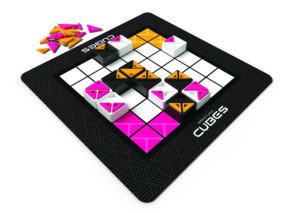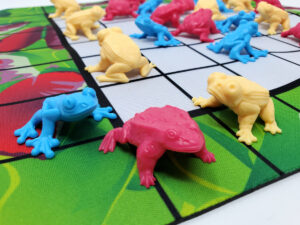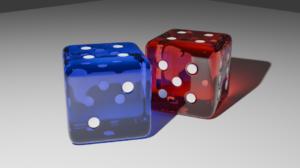How to Become a Video Game Artist
When I tell people I’m an artist, the reaction is usually an awkward pause followed by a joke about working at McDonald’s. When I tell people that I help make video games, they can suddenly believe I’m actually employed. Being an artist is fantastic. Art is what I love, and while there are artists who do manage to make it in the field’s purer forms, most of us will have to get a little creative if we’re to channel our passion and ability into something the masses can appreciate. There is no one way to become a video game artist, but I’ve compiled a list that marks my journey from a college student with an art minor to Art Director and primary artist of the new and rising Binary Cocoa.
1. Get a good portfolio together I’m sure most artists are aware that this is a necessary step to success, but it can’t be stressed enough. Have a complete portfolio that highlights your strengths. Be aware that having a cohesive portfolio can be more effective than showing off your versatility.
2. Learn about the process of making games You don’t have to be an expert to get started, but you do want to be knowledgeable about what will be required of you and have a general idea about what your teammate/teammates will be doing. Some basic concepts to study up on are sprite sheets, collaborative building programs like github, and animation options like After Effects.
3. Network Talk to everyone about what you do or even about what you want to do! Get on IRC and go to channels that have to do with video game development and share your portfolio. Be aware that there is some foul language and other interesting things on IRC that you may want to avoid. Talk to people in person as well. Try to talk to people who are interested in computers because they’ll probably be more interested in making a game than anyone else. You could try the Pet the Cutest Kitten club, but I think you’ll have better luck talking to people who work with computers. They usually (almost always) know someone who is building a game but lacking art. Don’t be afraid to team up with someone who hasn’t produced anything substantial yet, but don’t waste your time with someone who isn’t willing to put in the hours to create something worthwhile.
4. Be diligent Once you’ve found a team or programmer to work with, you should show them that you’re dedicated by actually making the art! It’s incredible how many times a project will get started and abandoned a week or two after it’s started. The gaming and programming world can be surprisingly tight-knit. Word spreads quickly, and you don’t want to jeopardize your future by giving up on a project when it loses its novelty.
5. Go beyond your duties Artwork can take a lot of time to produce, and programmers usually know this. There are also a lot of art assets that can be created quickly, which can result in the artist getting ahead of the programmer. Instead of demanding that something gets done over night, try to come up with ways to help. Even if you can’t program, there are almost always things you can do to move the project along. For example, you could look into creating sound effects, designing flyers, creating a website or social media page for your game, or finding ways to advertise your game.
6. Shop the finished product around There are many different platforms for selling a completed game. Sometimes the game itself won’t be what brings you money. In our case, Binary Cocoa put out a game that received only moderate attention from sellers, but caught the eye of a key investor. Be prepared to keep your day job until you’ve repeatedly proved that you can produce great games.
Any artistic venture can be risky and require immense effort. Creating game art is both exhausting and satisfying. There’s nothing better than seeing people enjoying your art, but you’ll need some elbow grease. Good luck and get going!



